Tech
What are super apps, digitalized world
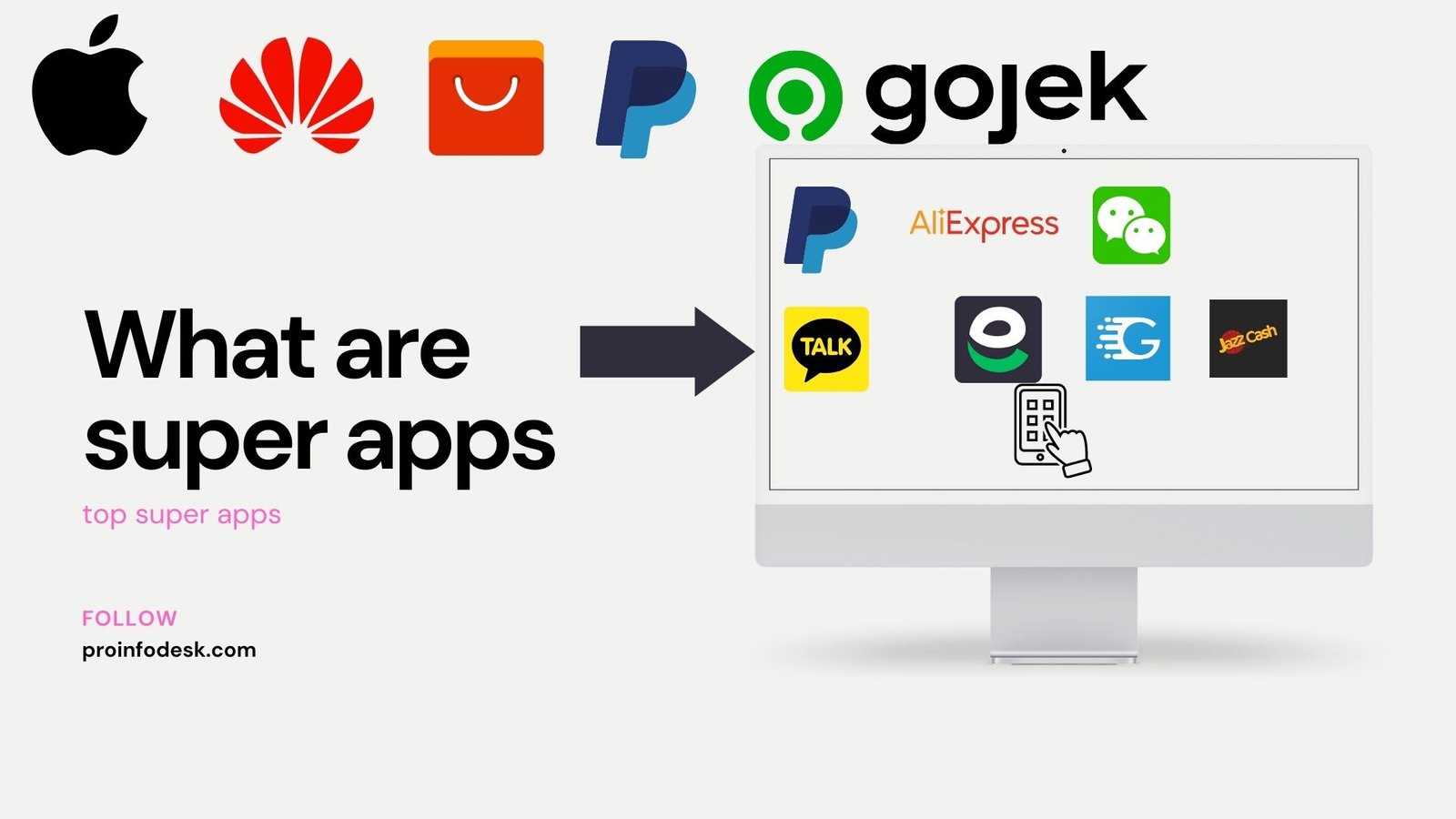
Have you ever thought that instead of installing separate apps for each task in your mobile phone, there is a single portal that fulfills all your needs?
Whether you want to call a friend, send money to a loved one online, order a pizza, pay an electricity bill, book a ride, pay a child’s school fees or buy a movie ticket. You will need five to seven types of apps.
But what if all these facilities are available in a single app? This is called super app which is getting quite popular nowadays.
About 4,000 apps are registered on the Google Play Store every day, the total number of which has reached 3,480,000 by July 2022. About 2.2 million apps are registered on the Apple Store as well.
But only a few are super apps. A super app is a collection of multiple services that may not be similar to each other but are working together in a single app.
In the context of Pakistan, if Facebook, WhatsApp, Instagram, Google Maps, Daraz and Easy Paisa are combined in one app, it will become a super app.
Some of the super apps:
China’s WeChat and Alipay, Singapore’s Grab, Indonesia’s GoTo, Vietnam’s Zalo and South Korea’s Kakao are super apps.
Most of them started as ride services or messaging apps and later expanded into financial services, food delivery, digital payments, gaming, travel booking, utility bill payments, airline ticketing, mobile phone top-ups, music streaming and social networking.
In today’s digital world, it is only natural for millions of users to connect with these apps. Especially in Asia, which has half of the world’s population, the reason for the success of these apps is the vast network of users.
Singapore’s Grab provides delivery, financial services and ride booking services to around 190 million customers in 428 cities across eight countries, including Thailand and Vietnam.
GoTo (GoTo) has become Indonesia’s largest tech company and a share of two percent of the GDP of one trillion dollars.
Super apps impact on economy:
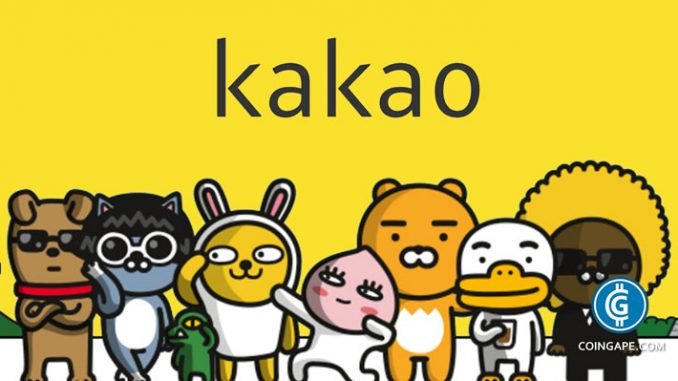
87% of the South Korean population is using Kakao. However, most super apps have been successful in Asia. Europe and the US, despite being ahead of the curve in technology, will see fewer super apps. There are several reasons for this.
The first reason is how quickly people in a region accept new technology. Smart technology is quickly gaining acceptance in countries where the majority of the population consists of young people. Asia’s majority population is also young and this is the first reason why most super apps are successful in Asia.
According to a report, in terms of the number of smartphone users, China and India are leading the world, while Japan and Indonesia are also among the first ten countries.
Another reason is easy access to internet and technology. Over the past two decades, Chinese companies have made high-quality, low-cost smartphones affordable for the common man. In addition, 73 percent of Chinese have access to the Internet.
These are the two driving forces behind Alipay and WeChat becoming super apps. You can also pay via Alipay or WeChat in a Chinese village. Any app usually starts with a half-service. For example, messaging, ride sharing or delivery service. After initial success, more services are added.
A successful super app in one country is not necessarily successful in another country. Success depends on how well app developers take into account local needs and issues.
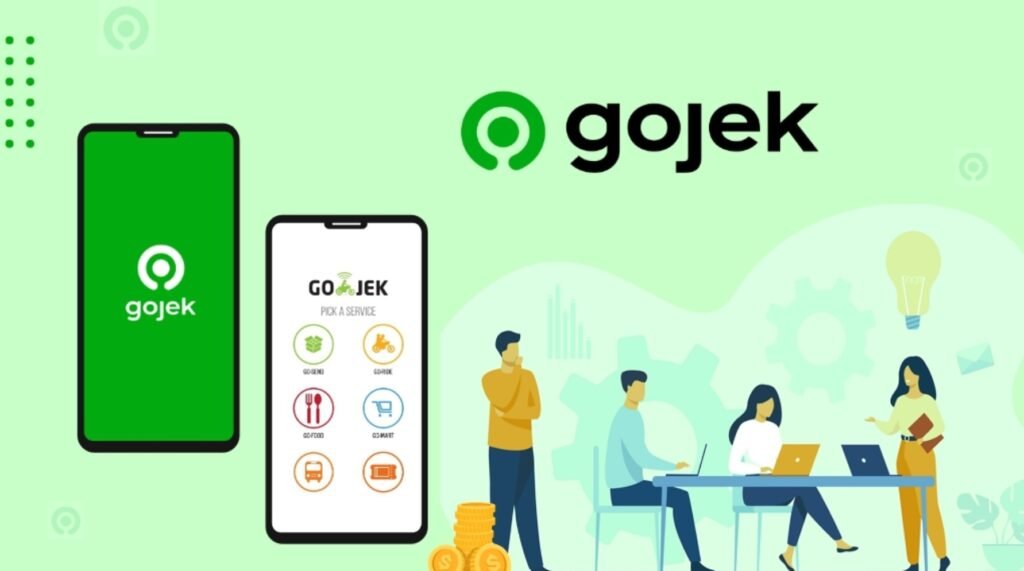
For example, Indonesia’s Gojek started as a bike ride and call center. At that time most people did not have mobile phones so the company provided easy loans to its bikers to buy mobile phones.
If you start a startup related to travel facilities, it is important that you have a thorough knowledge of the traffic situation and transport culture of your target area. In Lahore or Karachi, you cannot bring a model from China, Singapore or South Korea.
Super apps are gaining popularity not only in Asia but also in Latin American and African countries. Although there is a kind of digital gap due to economic backwardness, it is also being filled rapidly as the use of internet and smart phones is also increasing among the young generation of these countries. Chinese companies are also introducing cheap smartphones in these markets.
Why there are no super apps in europe:

There are many reasons why there are no super apps in Europe and America. Since China has created its own platforms to replace Facebook, WhatsApp, Twitter and Google, the competition has not been there. Chinese companies have a large population of their own country as consumers and no competition.
But the competition between companies in America and Europe is fierce. For example, Apple’s iMessage competes with Facebook’s WhatsApp and Messenger. This competition does not allow any one company to monopolize the market in such a way that it creates a super app.
Euorope’s privacy laws are very strict:
Another reason is that data privacy laws in China are not as strict as in Europe and America. Big Chinese companies have millions of users’ data that they use for their various services, but that doesn’t mean that Chinese users don’t care about their privacy.
In contrast, Europe is very sensitive about data privacy and its laws are quite strict.
Most of the super apps depend on the data of users. They may also use user data stored for one service for another service. Which is easy in a country like China, but very difficult in Europe and America.
Super apps in Pakistan:
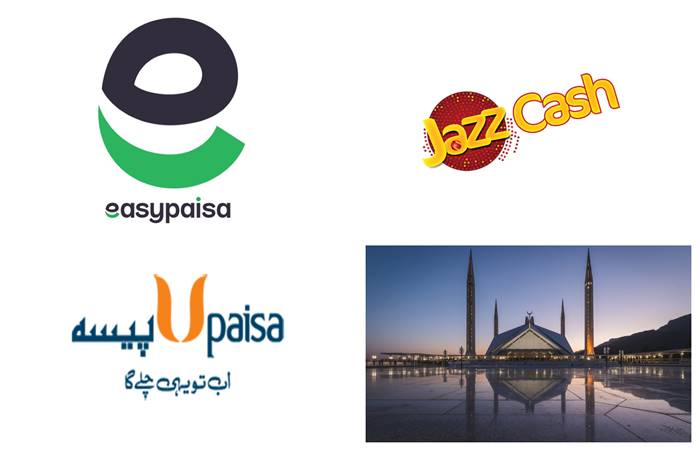
Officially, there is no super app in Pakistan because for a while telecom companies did not go beyond call and message service and with the presence of apps like WhatsApp and Messenger, the role of telecom companies was reduced to that of an internet provider. .
Jazz once tried to launch a super app called Veon, modeled after China’s WeChat, but it failed. Because Pakistan is not China where Google’s alternative to Baidu, Amazon’s alternative to Alibaba and Facebook and WhatsApp’s alternative to WeChat exist.
Despite this, telecom companies are offering facilities like digital payments, banking, shopping and mobile top-up through their apps. Jazz Cash, Easy Paisa and U Bank are examples of this.
Easypaisa and Jazz cash, may be a super app:
Now the specific network issue is also eliminated. Irrespective of your network, you can open an Easy Paisa account. EasyPaisa and JazzCash are providing almost all facilities except message and call. Maybe one of them will become a super app in the near future.

Tech
GPT-5 Launched: Revolutionary Features That Make Chat GPT 5 the Most Advanced AI Model Yet

Introduction to GPT 5:A New Era of AI Starts Now
OpenAI has officially released GPT-5, and it’s not just an upgrade; it’s a step forward in the future of AI. GPT-5 was made to combine never-before-seen capability with unrivaled flexibility. Its goal is to change the way people engage with AI.
This paradigm gives developers, researchers, marketers, and regular users a better, faster, and more dependable experience than anything else.
In this article, we’ll talk about the main characteristics, unique skills, and reasons why GPT-5 is already being called the most powerful AI model in the world.
One AI System—No More Switching Models
The smart routing system is one of the most groundbreaking new features in GPT-5.
In the past, consumers had to choose between multiple models for certain activities, including fast, big, or cheap. Now, GPT-5 automatically picks the best version for your question: Deep Reasoning Mode turns on when you need to solve a complex problem in more than one stage. Speed Mode: Uses lighter versions for jobs that are quick and easy. Efficiency Mode: This mode balances performance and resource use without lowering quality. With this unified architecture, you always receive the best results, whether you’re looking for brief data or making complicated applications.
PhD-Level Intelligence with 45% Fewer Mistakes
OpenAI says that GPT-5 goes from being “high-schooler” smart (GPT-3) to being a PhD-level expert.
It’s not only smarter; it’s also a lot more accurate: There are 45% fewer factual mistakes than in GPT-4o. Better at knowing itself—knows when it doesn’t know the answer. Better logical reasoning for use in school, research, and work. This means that GPT-5 is a much more reliable partner for important tasks like making decisions with a lot at risk, doing scientific research, and developing commercial plans.
GPT 5 is Your own AI coder and creative partner
For developers and designers, GPT-5 is a total game-changer: One-Prompt App Creation: You can make whole websites, apps, and even games using only one descriptive prompt. Aesthetic-Aware Design makes layouts and user interfaces that not only work, but also look good. Advanced Debugging lets you easily navigate huge codebases and fix hard bugs. Writers, marketers, and content creators may also use GPT-5 to brainstorm, write, and improve content in a way that is similar to how humans do it. This makes it a real creative partner.
Integration of all tools into one
Everything you need is in one spot with GPT 5. It combines all of OpenAI’s features into one smooth interface, so you don’t have to switch tabs or modes anymore: Web browsing in real time for data. DALL-E 3 makes images for creative purposes. Voice Interaction for talking like a real person. Collaborative Canvas lets you brainstorm and develop together in real time. This unified method saves time and makes it easy to mix text, graphics, and interactive elements in unique ways.
Personalization Like Never Before
GPT-5 doesn’t just understand what you ask; it also learns about you. You can choose its tone and style by using built-in “personalities”: Cynic: funny and doubtful. Robot: Straightforward and formal. Listener: understanding and communicative. Nerd: full of details and technological stuff. This makes GPT 5 more like a person and lets you change it to fit your needs, making it great for anything from casual conversations to professional advice.
What Makes GPT-5 a Paradigm Shift
GPT-5 is not merely faster or bigger like most model improvements. It is also more human-aligned in a fundamental way: Accuracy and trustworthiness that have never been seen before. Easily adapting to the difficulty of the task. One interface with real multi-modal capability. diverse requirements call for diverse ways of interacting. Everyone can use the latest AI for free, which makes AI technology more accessible.
Final Thoughts: The Future of AI Is Here
GPT-5 is the beginning of a new era in the history of AI. It is the most advanced AI model to date since it can think deeply, reply quickly, make things look beautiful, and change without any problems. As businesses look into what this technology can do, from making software automatically to analyzing data in real time, one thing is for sure: Chat GPT 5 will change the way we work, learn, and make things.
Frequently Asked Questions About GPT-5
1. What is GPT-5?
GPT-5 is OpenAI’s latest and most advanced AI model, designed to deliver higher accuracy, faster responses, and a unified experience by automatically selecting the best model for each task.
2. What makes GPT-5 better than GPT-4?
GPT-5 has 45% fewer factual errors, offers PhD-level reasoning, includes a smart routing system for optimal performance, and integrates all AI tools like web browsing, image generation, and voice interaction into one interface.
3. Can GPT-5 create apps and websites?
Yes. GPT-5 can build complete apps, websites, and even games from a single descriptive prompt, with both functional code and aesthetic design choices.
4. Does GPT-5 have personalization options?
Yes. GPT-5 allows users to choose from preset personalities like Cynic, Robot, Listener, and Nerd, tailoring tone and style to individual preferences.
5. Is GPT 5 available for free?
OpenAI has made GPT 5’s core capabilities available to free users, giving wider access to its powerful reasoning, creation, and research features.
Tech
Apple’s New AI Model Matrix3D: Transforming 2D Photos Into Immersive 3D Worlds
Apple’s groundbreaking AI model, Matrix3D, turns simple 2D images into stunning 3D environments with unmatched precision. Developed in collaboration with top researchers, this open-source innovation could revolutionize AR, gaming, and digital design. Explore its potential today!
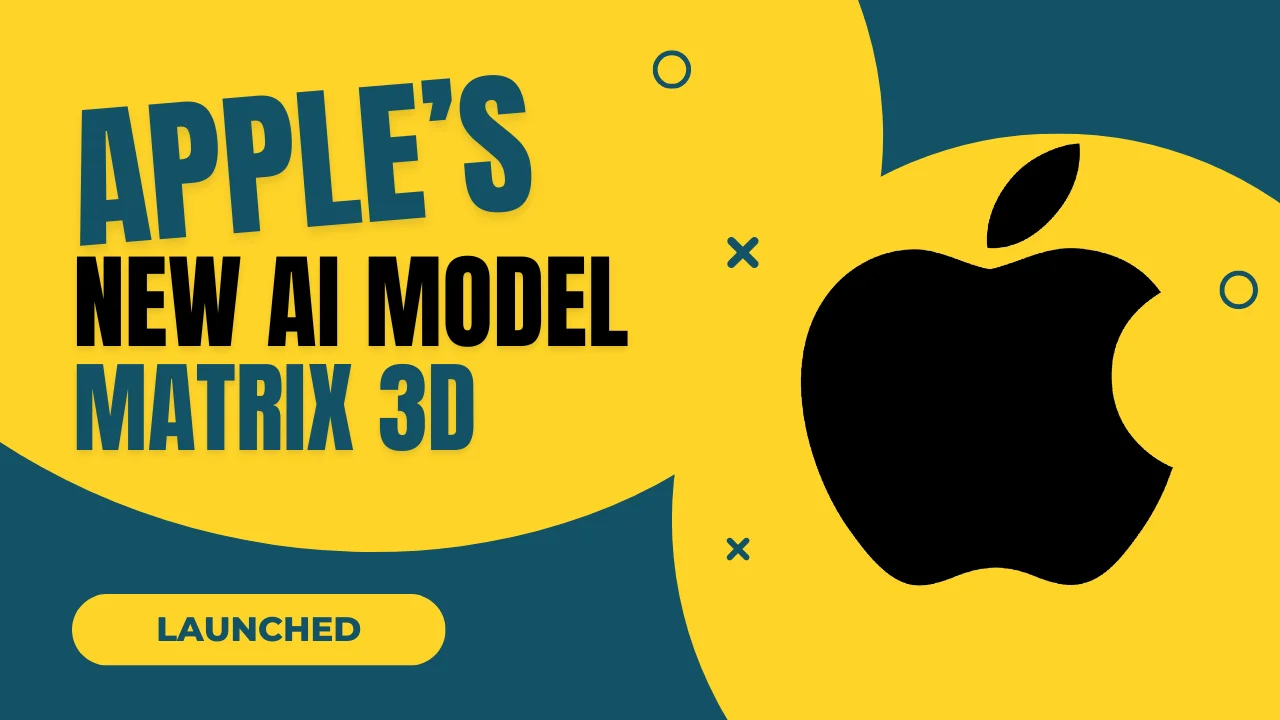
Apple has once again pushed the boundaries of innovation with the debut of Matrix3D, a revolutionary AI model designed to convert ordinary 2D images into rich, interactive 3D environments. Developed in partnership with researchers from Nanjing University and the Hong Kong University of Science and Technology, this cutting-edge technology promises to redefine how we approach 3D content creation, photogrammetry, and augmented reality experiences.
What Makes Matrix3D a Game-Changer?
At its core, Matrix3D is a versatile AI powerhouse built to tackle multiple photogrammetric challenges simultaneously. Unlike traditional tools that require specialized hardware or extensive datasets, Apple’s new AI model simplifies the process with three groundbreaking capabilities:
- Precision Pose Estimation
The model intelligently calculates the exact position and orientation of a camera when a photo was taken—critical for mapping objects in 3D space. - Depth Prediction Mastery
By analyzing subtle visual cues, Matrix3D predicts the distance between objects and the camera, creating detailed depth maps that form the backbone of 3D scenes. - Novel View Synthesis Magic
Ever wished to see a scene from a completely new angle? Matrix3D generates realistic alternative perspectives using just a handful of existing images.
The secret sauce lies in its multi-modal diffusion transformer (DiT), which merges diverse data types—images, camera parameters, depth information—into a unified 3D representation. What’s even more impressive? Its masked learning technique allows the model to train effectively on incomplete datasets, bypassing a major hurdle in AI development.
Why Matrix3D Stands Out in AI-Driven 3D Modeling

- Works Wonders With Minimal Input
Forget needing dozens of photos. Matrix3D can reconstruct intricate 3D scenes from just 1-3 images, democratizing high-quality 3D modeling for casual users and professionals alike. - All-in-One Photogrammetry Tool
By combining pose estimation, depth mapping, and view synthesis into a single workflow, Apple’s AI model eliminates the need for multiple specialized tools. - Hollywood-Grade Realism
The model’s ability to interpret lighting, textures, and spatial relationships results in strikingly lifelike 3D environments that mirror real-world physics. - Open-Source Collaboration
In a bold move, Apple has open-sourced Matrix3D’s code and pre-trained models on GitHub, inviting developers and researchers worldwide to build upon its framework.
The Future of iPhones, AR, and Digital Creativity
Though still in the research phase, Matrix3D’s potential applications are staggering. Imagine iPhone users snapping a few photos of their living room and instantly generating a 3D model for AR furniture shopping—or educators creating immersive history lessons from museum exhibit snapshots. For developers, this technology could accelerate workflows in gaming, virtual design, and even 3D printing.
Apple’s commitment to blending AI with creative tools hints at a future where spatial computing becomes as intuitive as taking a selfie. With rivals like Google and Meta investing heavily in 3D AI, Matrix3D positions Apple as a frontrunner in the race to dominate AR/VR ecosystems.
How to Explore Matrix3D Today
Curious to experiment with this technology? Apple has laid out a treasure trove of resources:
- In-Depth Research Paper: Dive into the technical architecture and training methodologies.
- GitHub Repository: Access the full codebase, pre-trained models, and setup guides to kickstart your projects.
Whether you’re a developer aiming to build the next-gen AR app or a digital artist exploring new mediums, Matrix3D offers a playground for innovation.
Final Thoughts: A New Era for Accessible 3D Design
Apple’s Matrix3D isn’t just another AI model—it’s a paradigm shift. By turning everyday photos into dynamic 3D worlds, it lowers barriers to advanced photogrammetry and empowers creators at all skill levels. As this technology evolves, we might soon see it integrated into Apple’s consumer products, making 3D content creation as commonplace as editing a video on your iPhone.
For now, the open-source release sparks endless possibilities. One thing’s certain: the line between physical and digital realms is about to get even blurrier.
Ready to explore the future of 3D AI? Head to Apple’s GitHub repository and join the revolution.
Tech
From Tensor G5 to AI Magic: What’s New in the Google Pixel 10
The smartphone landscape is heating up, and Google Pixel 10 series is poised to make waves. Following the well-received Pixel 9, which narrowed the gap with Apple and Samsung flagships, the Pixel 10 is shaping up to be Google’s most ambitious phone yet. From a groundbreaking chipset to AI-driven innovations, here’s everything we know—plus new insights—about the Pixel 10’s potential to disrupt the premium smartphone market.
1. Tensor G5: Google’s Big Bet on TSMC’s 3nm Power
The most significant leak so far confirms Google is ditching Samsung Foundry for TSMC to manufacture its Tensor G5 chip. Unlike the Tensor G4’s 4nm process, TSMC’s cutting-edge 3nm technology promises 20-30% better efficiency and 15% faster performance, addressing long-standing complaints about overheating and battery drain in earlier Pixels.
Why This Matters:
- Samsung’s Exynos-based Tensor chips often lagged behind rivals in thermal management. TSMC’s track record with Apple’s A-series and Snapdragon chips could finally give Google a competitive edge.
- Leaked benchmarks hint at Tensor G5 matching the Snapdragon 8 Gen 4 in multi-core tasks, a first for Pixel.
- Improved AI accelerators may enable on-device Gemini Ultra capabilities, enabling real-time video processing and smarter Assistant features.
2. Aggressive Pricing: A Direct Challenge to Apple and Samsung
Rumors suggest the Pixel 10 will undercut the iPhone 17 by nearly $120 in key markets. With Apple iPhone 16e already facing criticism for its $699 ‘budget’ tag, Google seems determined to lure premium buyers with flagship specs at mid-range prices.
Strategic Implications:
- Google’s smartphone market share sits at just 4% globally (IDC Q2 2024). Competitive pricing could help it capitalize on Apple/Samsung fatigue.
- Analysts speculate Google might absorb costs to promote its ecosystem (e.g., Pixel + Gemini AI subscriptions).
3. Battery & Cooling: Fixing the Pixel’s Achilles’ Heel
The switch to TSMC’s 3nm process isn’t just about speed. Early prototypes suggest:
- 5,200mAh battery for the Pixel 10 Pro XL (up from 4,600mAh in Pixel 9 Pro XL).
- Graphene-based cooling systems to prevent thermal throttling during prolonged AI tasks.
- “All-day” battery life targets, even with always-on AI features like Gemini-powered ambient sensing.
4. Design: Balancing Ergonomics and Aesthetics
The Pixel 9’s flat-edge design polarized users. For the Pixel 10, Google is reportedly testing:
- A slightly curved aluminum frame for better grip.
- Thinner bezels (1.2mm, down from 1.5mm) and a 6.3-inch Pro model with a 120Hz LTPO AMOLED display.
- A matte-textured back panel inspired by the Pixel Fold, paired with brighter, customizable “Gemini Glow” accent colors.
5. Cameras: AI Over Hardware? Not So Fast
While leaks emphasize AI upgrades, hardware isn’t being ignored:
- New sensor details: A 1/1.12-inch 50MP main sensor (up from 1/1.31-inch) for better low-light shots.
- AI editing suite: “Studio” mode for video (background noise removal, auto-framing) and “Perfect Group Shot” to merge faces from multiple photos.
- Pro-level video: 4K/120fps recording and Cinematic Lookout (AI-generated bokeh adjustments).
Pixel 10 Series Lineup: Four Models, One Foldable

Google is expanding its roster to include:
- Pixel 10 (6.1-inch)
- Pixel 10 Pro (6.3-inch)
- Pixel 10 Pro XL (6.8-inch)
- Pixel 10 Pro Fold (7.6-inch inner display)
The Pro Fold is the wildcard, rumored to feature a self-healing crease and a redesigned hinge. With Samsung dominating foldables, Google’s entry could push app optimization for Android’s foldable ecosystem.
Launch Timeline: Why Google Is Waiting
A delayed October 2025 launch (vs. the Pixel 9’s August debut) suggests Google is prioritizing Tensor G5 refinement. This aligns with TSMC’s 3nm production schedule, which is also supplying Apple’s A19 chips.
The Bottom Line: Can Pixel 10 Compete?
Google is doubling down on AI, affordability, and hardware polish. If leaks hold, the Pixel 10 could rival the iPhone 17 and Galaxy S25 in performance while undercutting them on price. However, challenges remain:
- Carrier partnerships: Limited carrier support in the U.S. has hindered Pixel sales.
- Global availability: Pixels still aren’t sold in key markets like India’s offline stores.
With Samsung and Apple investing heavily in generative AI, Google’s early-mover advantage in on-device AI could fade by 2025. But for now, the Pixel 10 looks like Google’s strongest bid yet for a seat at the premium table.
(Sources: 9to5Google, Android Authority, and industry analyst Ming-Chi Kuo.)
-

 How-To Guides6 months ago
How-To Guides6 months agoHow to Get Your Family Registration Certificate (FRC) NADRA in 2025
-

 How-To Guides4 months ago
How-To Guides4 months agoHow to Set Time on a Smartwatch Without an App (3 Easy Methods)
-

 Online earning6 months ago
Online earning6 months agoTreasure NFT Review: Real or Fake? Everything You Need to Know
-
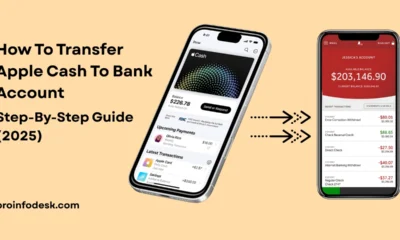
 How-To Guides5 months ago
How-To Guides5 months agoHow to Transfer Apple Cash to Bank Account: A Step-by-Step Guide (2025)
-

 How-To Guides6 months ago
How-To Guides6 months agoHow to Choose the Perfect Charger for Your Smartphone
-
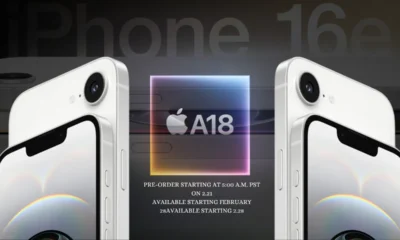
 iPhone6 months ago
iPhone6 months agoApple iPhone 16e: The Affordable AI-Powered Smartphone You’ve Been Waiting For
-

 Tech6 months ago
Tech6 months agoFrom Tensor G5 to AI Magic: What’s New in the Google Pixel 10
-

 Online earning4 months ago
Online earning4 months agoWhat Is YouTube Automation and How to Make Money from It in 2025




